Knitting with Sock Yarn
- Blog Views : 84
- Symfonie Yarns
- 18Aug, 2023

Many people LOVE knitting socks. So much so that there are various sites devoted only to sock knitting patterns, free and otherwise, and tricks of the trade. While much has been written about the various methods for knitting socks, we have not read as much about sock yarn, per se, and the other ways to use it. Here’s some information on the subject you might find helpful.
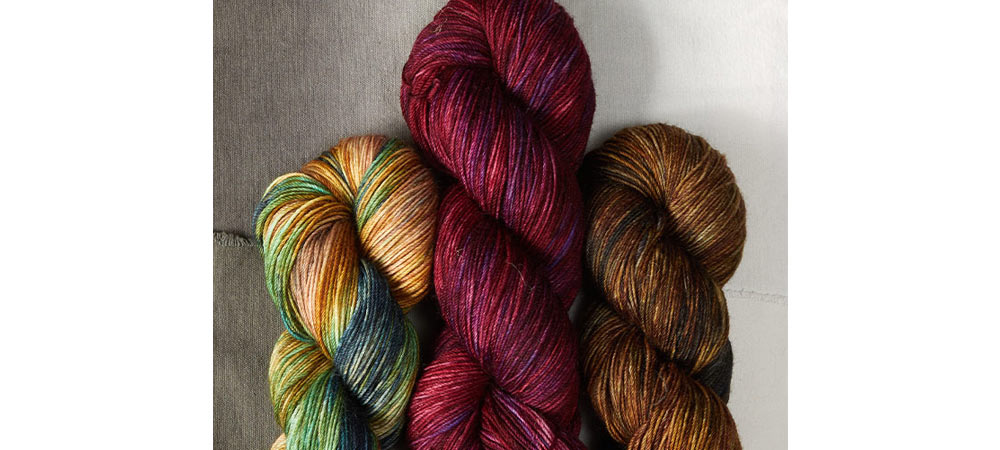
Before deciding to invest your time in making a pair of socks, it’s important to know how they will be used. Unless you are making “bed socks” where the intent is only to keep your toes warm at night, you will probably find it best to use a good “sock yarn”. The difference between “regular” fingering weight yarn and sock yarn is that the latter has a percentage of polyamide (also known as nylon) added to the wool. This material is added into the yarn blend in order to make them tougher at stress points – like the heel and the toe area. Most sock yarns are made from a blend of 75-80% wool and 20-25% nylon. The nylon strengthens the fiber, but it does not harm the wool content, ruin its look or alter its warmth. Almost all sock yarns are machine washable and dryable. The nylon content helps them retain shape and durability as well. This makes most sock yarns suitable for a range of additional projects where the retention of shape and durability is important.
Here is a prime example of one such yarn – a yarn meant to be walked on. We make that comment with respect, mind you! This specific yarn comes in a variety of beautiful solids, as well as 10 variegated colors. Variegated yarns are very popular with sock knitters because they bring a “pop” of color to the normally sedate ankle area.
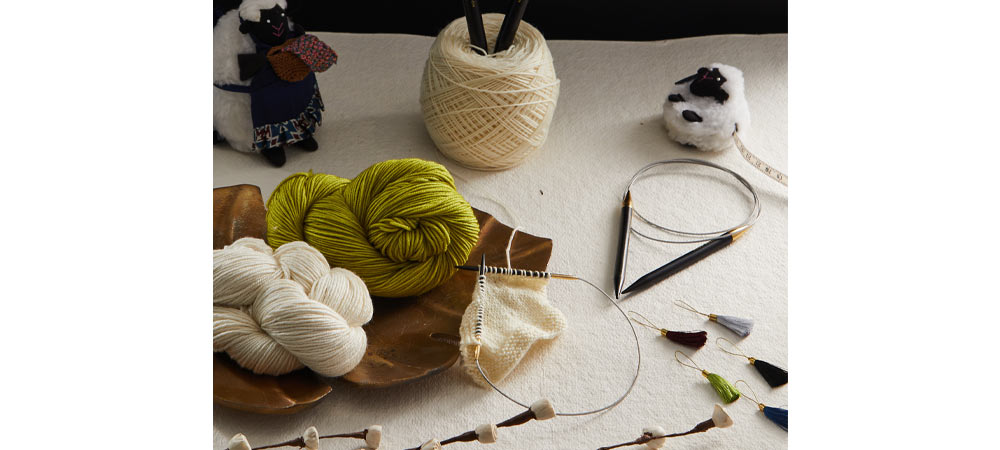
In addition to sock yarn with the traditional fiber composition, there are more and more sock yarns available that are made from unique and innovative materials, such as soy fiber, nettle, and bamboo. Don’t forget cotton sock yarn. It’s perfect for showing off cute handmade socks for kids as well as for summer wear.
While it is true that socks require a bit more knitting knowledge, one does not need to be an expert knitter to learn the technique. Here is a site for free sock patterns that is perfect for those who are just starting out. You can see which makes sense to you.
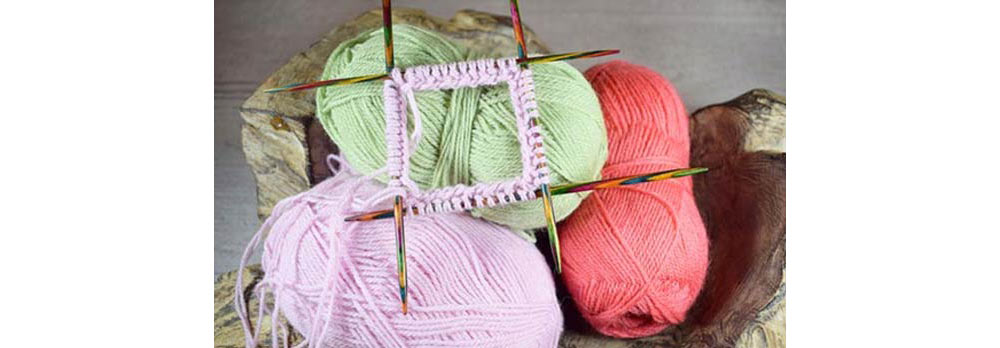
Most socks are made using double point needles. (For a good tutorial on knitting with double points, look here) If you are experienced in using double point needles (DPNs), there are a wide assortment of types available, from aluminum to carbon fiber, but if you are new to knitting with double points, you might wish to start with 6” bamboo needles. These wooden needles work well with all yarns, providing enough traction to prevent stitches from slipping off the needle.
Sock yarn is versatile, in that it can be used for more than socks. The nylon content also adds a bit of body and grip to the yarn – which makes it ideal for items where those things are important.
With the normal sock yarn skein containing approximately 420 yds, there is often a bit left over after the socks are completed. That’s when smaller items – like baby hats, mittens or toys can be made from leftovers. Here are some ideas on how to use that leftover yarn.
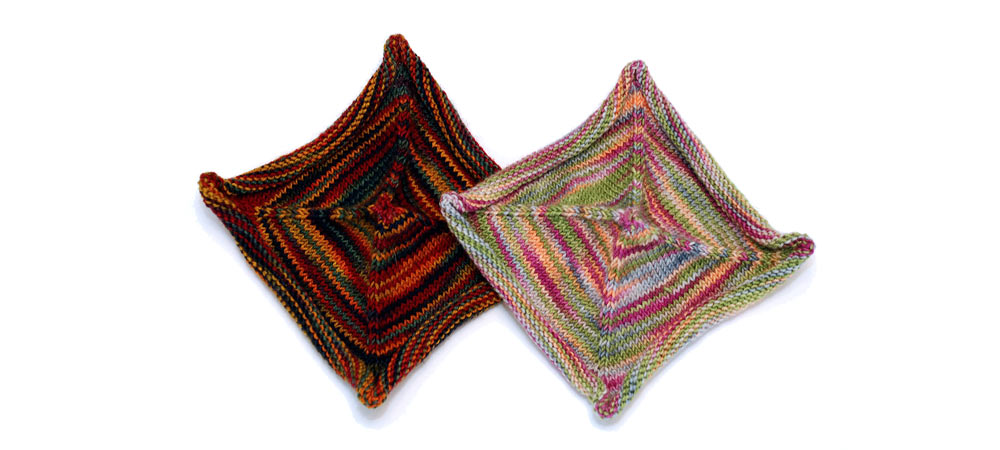
Squares made from sock yarn – destined to be a blanket! Find the pattern here.
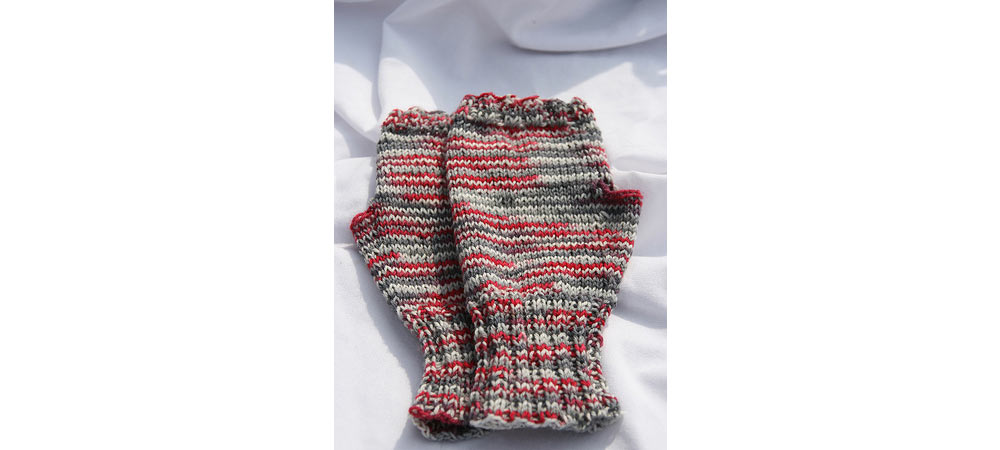
The beauty of these fingerless mitts is that they can be stopped when you run out of yarn! They might be perfect for little hands if you have less than 75 yds. Find the pattern here
This darling little pinwheel purse was created by the ingenious knitting designer, Frankie Brown. You can find this pattern and many more on Ravelry.
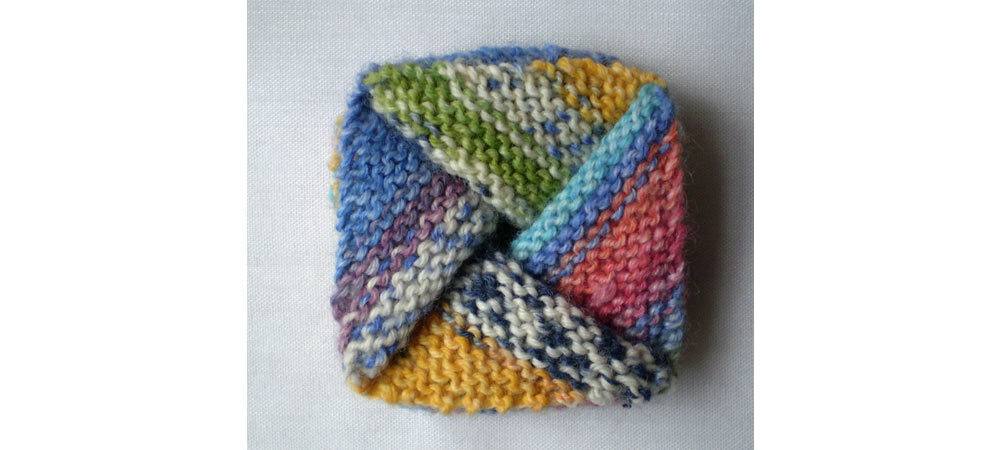
By now you can see why we have a particular affection for sock yarn – and we haven’t even touched on the subject of using it for crochet projects. We’ll be back with more ideas on that soon!
-
- 19 Apr,2025
-
- 14 Apr,2025
-
- 10 Apr,2025
-
- 07 Apr,2025
-
- 04 Apr,2025
-
- 01 Apr,2025
Copyright © Symfonie Yarns 2025 - all rights reserved | RSS Feed
